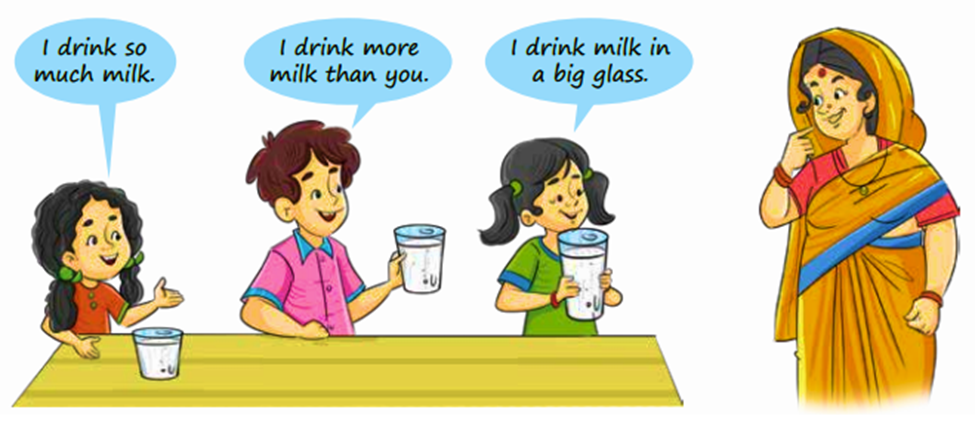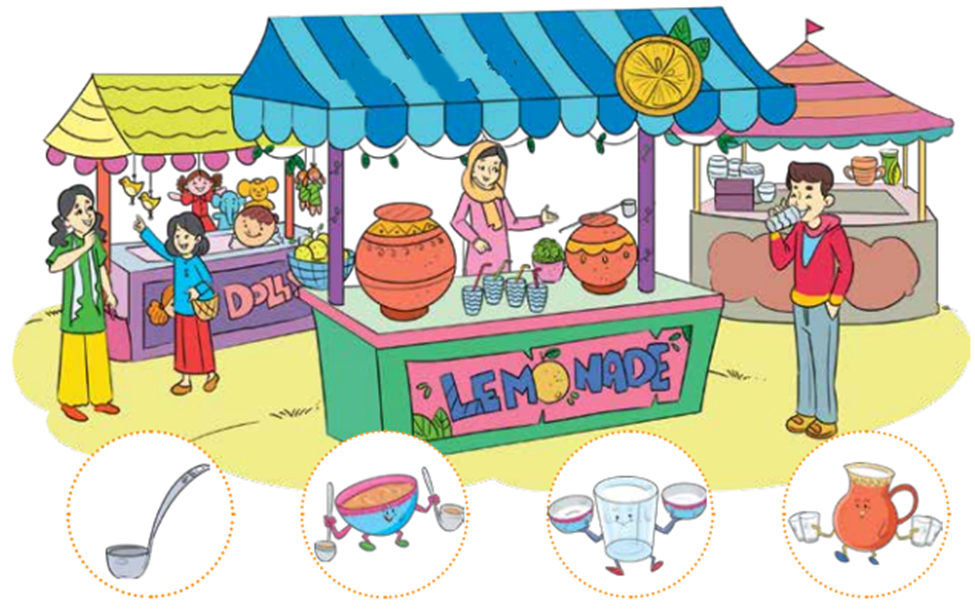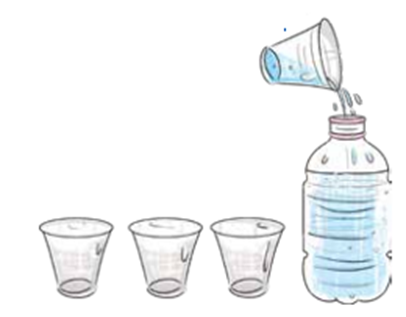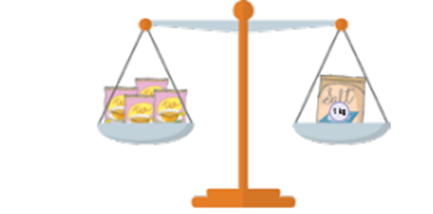Filling and Lifting - Exercise-wise Questions and Answers For Class 3 Maths - Free PDF Download
FAQs on NCERT Solutions For Class 3 Maths Chapter 11 Filling and Lifting - 2025-26
1. What concepts are covered in NCERT Solutions for Class 3 Maths Chapter 11 “Filling and Lifting”?
NCERT Solutions for Class 3 Maths Chapter 11 focus on capacity, volume, estimation, comparison of containers, and measuring with non-standard units (like ladles, bowls, and bottles), as per the CBSE 2025–26 syllabus.
2. How does Chapter 11 in Class 3 Maths teach students about capacity?
Students learn about capacity by comparing different containers, filling them with liquids, and estimating which holds more or less. Activities involve guessing, actual measurement, and checking answers to reinforce understanding of volume and capacity.
3. How many ladles are required to fill 4 glasses, according to NCERT Solutions for Class 3 Maths Chapter 11?
According to NCERT Solutions for Class 3 Maths Chapter 11, 16 ladles are needed to fill 4 glasses, as per typical problems in the chapter.
4. Can the NCERT Solutions for Class 3 Maths Chapter 11 help in exam preparation?
Yes, the solutions provide the correct methodology for solving textbook problems stepwise, ensuring students understand each step, which helps in scoring well on CBSE pattern exams.
5. Why is estimation important in Filling and Lifting, and how is it practiced in Chapter 11?
Estimation builds mathematical intuition. In Chapter 11, students first guess how much a vessel holds and then verify by measuring, which helps develop both reasoning and practical measurement skills.
6. What mistakes should students avoid when comparing the capacity of two containers?
Common errors include assuming taller containers always hold more, ignoring the width or shape, or forgetting to compare with the same liquid. Chapter 11 NCERT Solutions guide students to use actual measurement and comparison for accuracy.
7. How do the NCERT Solutions encourage conceptual understanding rather than rote learning?
NCERT Solutions for Chapter 11 require students to perform hands-on tasks, analyze outcomes, and justify their reasoning, ensuring mastery of the concepts of volume and weight instead of just memorizing answers.
8. What FUQs (Frequently Unasked Questions) might help deepen understanding of capacity and measurement in this chapter?
- How does the shape of a container affect its capacity, even if the height is the same?
- Why is it better to use the same measuring tool (like a ladle or bowl) for every comparison?
- What happens if a container is partly filled and how do you express that capacity?
9. Which keywords should a parent or student use to find the correct NCERT Solutions for Class 3 Maths Chapter 11 online?
Use terms like NCERT Solutions for Class 3 Maths Chapter 11 Filling and Lifting, CBSE 2025–26 Class 3 Maths solutions, or stepwise filling and lifting answers to find accurate resources as per the latest syllabus.
10. Explain how weight comparison activities in Chapter 11 improve mathematical thinking for Class 3 students.
Activities such as weighing objects with coins or matchboxes develop critical thinking skills related to estimation, measurement, and units, which form a strong foundation for advanced mathematical topics.
11. What are the real-life applications of capacity and volume concepts introduced in Chapter 11?
Understanding capacity and volume helps in tasks like pouring drinks, measuring ingredients while cooking, or deciding which bottle can store more water, making Maths practical for daily life.
12. How are ‘more than’, ‘less than’, and ‘equal to’ used in the context of container capacity in this chapter?
Students use these terms to compare and fill out exercises stating whether one object holds more than, less than, or equal to a standard measure (like 1 litre), building comparison and reasoning skills as per CBSE Class 3 Maths.
13. How should a student approach a question if they cannot directly measure a container’s capacity?
The recommended method is to use a non-standard unit (like a cup or ladle) to fill the unknown container and count how many units it takes, reinforcing indirect measurement strategies taught in Chapter 11.
14. How does the chapter’s methodology help in avoiding misconceptions related to capacity and weight?
By engaging students in hands-on activities and emphasizing stepwise verification, Chapter 11’s solutions help students avoid common misconceptions, such as misjudging capacity based solely on the appearance of a vessel.
15. Why is stepwise problem solving emphasized in the NCERT Solutions for this chapter?
Stepwise problem solving ensures clarity in each stage of solution, helps students follow CBSE marking schemes, and encourages correct logical sequencing, improving both comprehension and exam results.







































